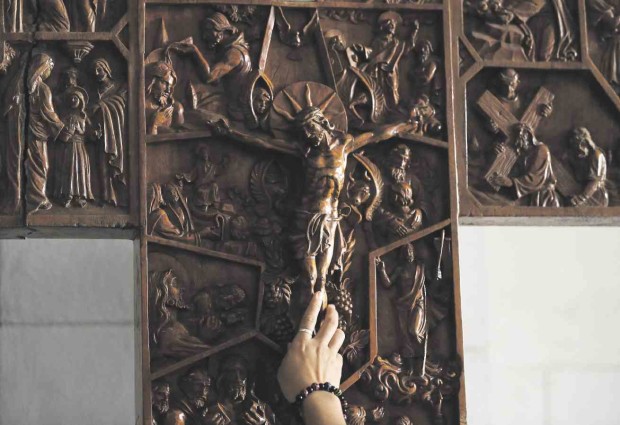‘Pasyon’ written 202 years ago by Bulacan priest

ACT OF FAITH A pilgrim touches the Jubilee Cross at Manila Cathedral in Intramuros, said to contain a relic of the True Cross of Christ. LYN RILLON
BULAKAN, Bulacan—San Jose residents who walk through Padre Pilapil Street here might have wondered idly about the priest who earned this geographical homage. Holy Week might be a good time to discover this Catholic priest who was born in this town, 35 kilometers north of Metro Manila, 257 years ago.
Pilapil wrote “Pasyong Mahal ng Panginoong Hesukristo,” an epic narrative of the passion, death and resurrection of Jesus Christ, often set to dolorous music by the faithful and chanted during the Lenten season.
In 1814, Fr. Mariano Pilapil of Barangay San Jose wrote the “Pasyon,” also known as “Pasyong Pilapil.”
According to Jose Jaime Salvador Corpuz, who wrote the book, “Mohon, Mga Bulakenyong Biyaya ng Kasaysayan,” Pilapil was born in 1759 in San Jose village and was a doctor of theology and a representative to the law-making body, the Spanish Cortes.
Before he gained popularity for writing the “Pasyon,” Pilapil also wrote the book, “Gramatica Hispano-Latina,” which drew attention to his linguistic prowess.
Article continues after this advertisementIn his book, Corpuz described Pilapil as the famous “Tagalista,” for being a master of the Tagalog language.
Article continues after this advertisementTaught Balagtas
Pilapil completed high school at San Carlos University and earned his undergraduate degree and doctorate in sacred theology at the University of Santo Tomas.
The priest was assigned to Cavite province from 1794 to 1795. He also served as a teacher at Colegio Real de San Jose in 1812, where he taught Bulacan poet Francisco Balagtas who wrote “Florante at Laura.”
Pilapil died in 1818, four years after writing the “Pasyon.” He has yet to be given recognition as an outstanding son of this town, said Corpuz, who is also a heritage and tourism consultant and former president of the Bulacan Heritage Conservation Society.
But there is a street named after Pilapil, thanks to a municipal ordinance passed decades ago, said Joey Rodrigo, Bulakan municipal tourism officer.
Rodrigo said he would propose that a monument be put up for Padre Pilapil, much like the monument built for Padre Mariano Sevilla from neighboring Barangay Santa Ana, who started the Flores de Mayo festival in the country in 1865.
RELATED VIDEO